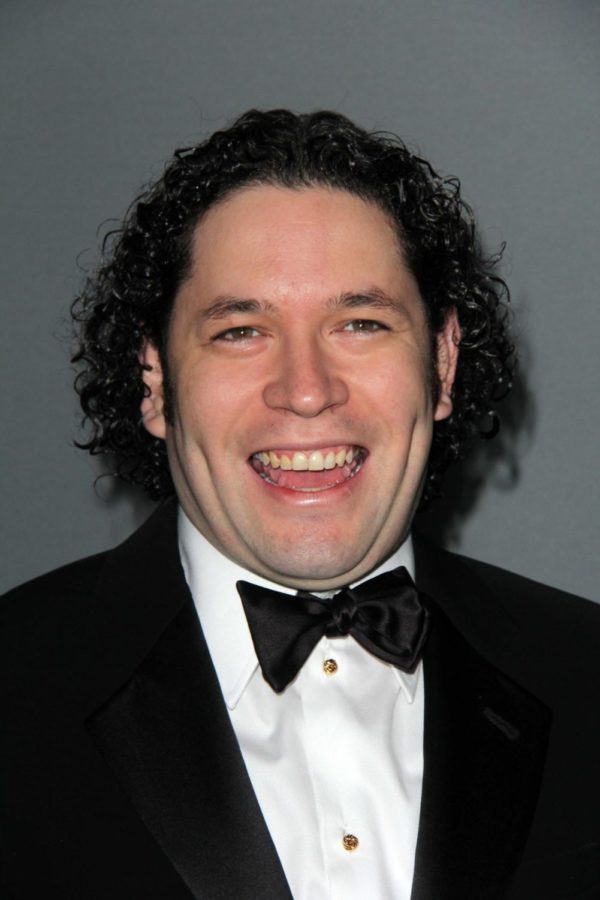A New Revival of the Old Era: The New York Philharmonic’s Next Conductor, Gustavo Dudamel
Dudamel will begin his duties in 2026, which will represent a major shift for the orchestra.
Pictured is Gustavo Dudamel at the American Film Institute 44th Life Achievement Award Gala Tribute to John Williams at the Dolby Theater on June 9th, 2016 in Los Angeles, California.
The New York Philharmonic remains as one of the oldest, most remarkable American orchestras. In its two-hundred years of existence, the podium has met the feet of some of the greatest conductors such as Gustav Mahler, Arturo Toscanini, Pierre Boulez, and the most memorable, Leonard Bernstein. The recent years however, are not as comparable to the former legacy the orchestra had held. Jaap van Zweden, the orchestra’s current music director, isn’t much of a celebrity inside or out of the classical music community. Though, a bright light of hope has shone on the classical music scene in New York with Gustavo Dudamel announced as the 27th music director of the New York Philharmonic.
Gustavo Dudamel, the latest conductor of the Los Angeles Philharmonic, is one of the most distinguished conductors in contemporary music. His musical origins began in Venezuela, where the young maestro pursued his musical passions through the program, El Sistema, a music education program for the Venezuelan youth. Dudamel joined the program as a violinist, but soon began to study other disciplines of music: composition, then conducting. The young maestro speedily went up ranks in his music career, and was appointed conductor of the The Simón Bolívar Symphony Orchestra of Venezuela, the main youth orchestra of Venezuela, at the ripe age of eighteen. With the youth orchestra, Dudamel toured several countries, building a reputation for himself internationally.
After winning the Gustav Mahler Conducting Competition, Dudamel rapidly gained the attention of major figures in classical music. He attracted the interest of some of the world’s most renowned conductors, including Sir Simon Rattle and Claudio Abbado, with whom he studied. In 2003, he became Sir Simon Rattle’ conducting assistant conductor with the Berlin Philharmonic. In a series of conversations with the philharmonic’s musicians, Dudamel explains that this was his first, real experience living away from his home. With the Berlin Philharmonic’s reputation for being one of the best orchestras in the world, Dudamel found his experience working with the orchestra and maestro Rattle to be “life-changing,” because of how musical tradition was reflected throughout the orchestra.
Though he admired tradition, Dudamel pushed the boundaries of the orchestra in his 2008 premiere with the Berlin Philharmonic, conducting a program of Spanish-South American music, something not-so traditional for the orchestra. This attitude became characteristic of Dudamel’s musical career as he always looked forward to music, but not letting the fundamentals fade away.
As Dudamel became the music director of the Los Angeles Philharmonic in 2009, Dudamel’s and the orchestra’s reputation increased, creating a brand for themselves. The maestro’s experience in his youth at El Sistema inspired a similar program founded by the Los Angeles Philharmonic, the Youth Orchestra of Los Angeles (YOLA). This program opened the doors for several youth musicians in Los Angeles, and nationally too, with the summer extension of this program, Youth Orchestra of Los Angeles National Festival. A YOLA violinist, Mary Elizalde explained that, “Before YOLA, I had no exposure to classical music or artistic programs, and ever since I joined YOLA in 2014, I have had the opportunity to establish myself as an artist and violinist, which couldn’t have been done without the support of YOLA. This program has provided me with so many performance opportunities, including being conducted by Dudamel himself, and due to its financial support, has allowed many musicians to fulfill their artistic desires and dreams.” Dudamel furthered the reach of classical music to the newer generations by often collaborating with popular artists such as singer Billie Eilish and rapper Tyler the Creator.
The maestro’s youthful outreach and popularity brings hope for the revival of Leonard Bernstein’s “golden-age” with the New York Philharmonic. In the mid twentieth century, the New York Philharmonic produced a series of the Young People’s Concerts, which combined musical lectures and performances. Though with the prevalence of in-home televisions in the 50s and 60s, as the current music director then, Bernstein was able to draw attention to these concerts, and in general classical music, resulting in sold out performances throughout Lincoln Center and Carnegie Hall. His successors, however, were not able to grasp the attention of the public in the way that Bernstein did.
Bernstein and Dudamel share an essential core value in the conducting and musicality — adhering to tradition yet breaking boundaries. In Bernstein’s time, classical music remained relevant, because Bernstein made efforts to connect the new and the old. Jazz and Broadway was the musical competition of the classical genre at the time, but instead of separating them, Bernstein combined the genres, using the new to revitalize the old. Now, the emphasis is on representation in classical music. The tradition consists of the same repertoire from the same cultures, but Dudamel challenges that by incorporating international, and new music in his programs alongside the standard repertoire, showcasing the true versatility of the orchestra that isn’t solely traditional. Dudamel once said that an orchestra and music-making is like a “beautiful hurricane of energy,” which he has emphasized through his career as something that cannot destroyed, but only transformed.
The maestro’s youthful outreach and popularity brings hope for the revival of Bernstein’s “golden-age” with the New York Philharmonic.
Bianca Quddus is a Managing Editor and Advisory Editor for ‘The Science Survey’ who enjoys writing about culture and the arts. The aspect that she...











